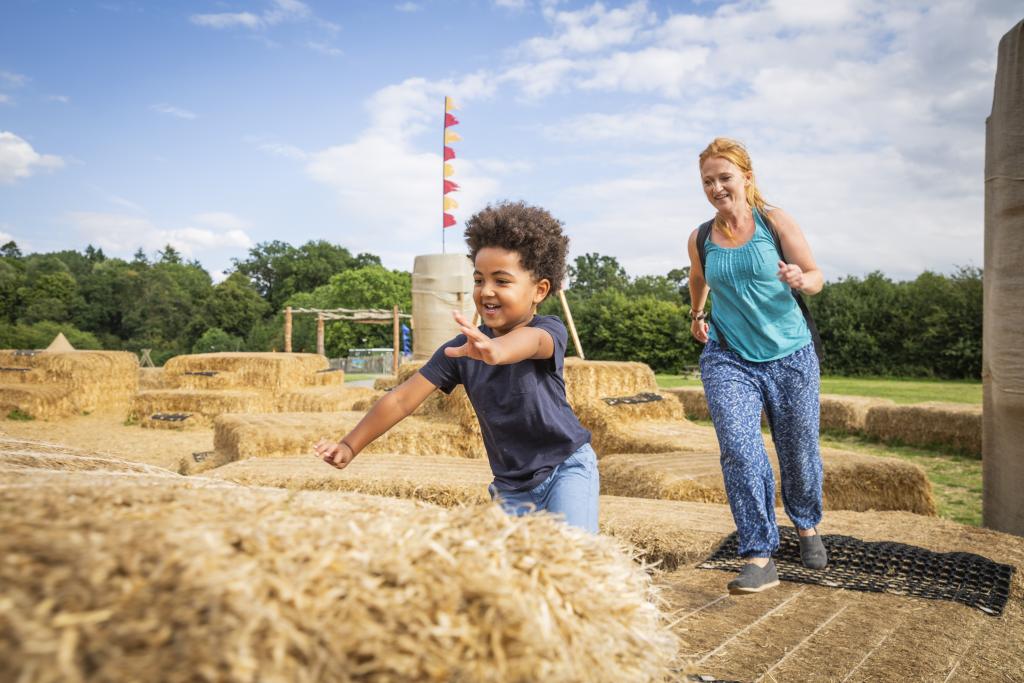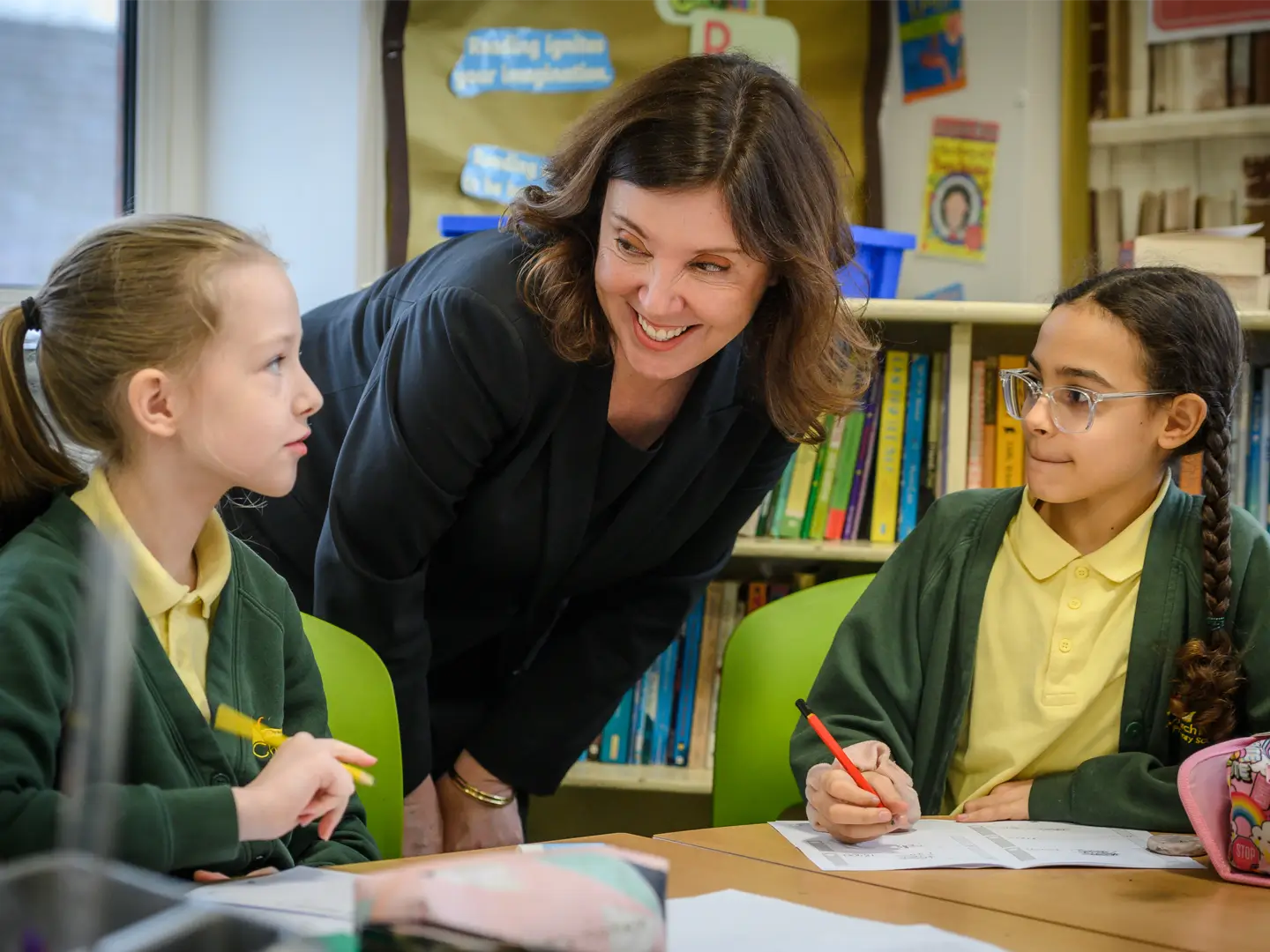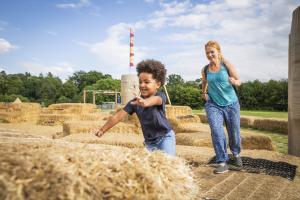As part of the ongoing Screen Free Summer series encouraging healthier habits and digital detox during the summer holidays, I am sharing a guest blog from the National Trust. Today’s contribution comes from Amber Potter-Merrick, Public Engagement Producer at the National Trust on the importance of reconnecting with nature.
At the National Trust, we believe it’s not just the amount of time spent in nature that matters, but the freedom children have to explore it on their own terms. Whether it’s watching clouds drift by or inventing games in the local park, these small, self-directed moments can have a big impact.
Spending time in nature has well-documented benefits for both mental and physical health. But beyond individual wellbeing, research shows that a strong connection to nature supports social cohesion, academic achievement, and even workplace productivity. For children, spending time in green spaces has been linked to better lung health, stronger bones, and improved emotional resilience.
But we also know that access to nature isn’t equal. Today, 38% of people in England don’t live within a 15-minute walk of a green space. That’s why the National Trust is calling for the biggest improvement in access to urban nature since the Victorian era — with initiatives aimed at providing one million children with the opportunity to play in nature close to their front doors.

As our Director General Hilary McGrady has said:
“The impact that being in nature has on young people is profound. If children and young people can engage with nature early in life, they grow up to care about the natural world and are more likely to take action to protect it.”
One way the National Trust is helping to create those early connections is through Summer of Play — a programme that’s been running at hundreds of National Trust places for the past three years. Building on the success of our 50 things to do before you’re 11¾ campaign, it’s all about giving children the space and freedom to follow their curiosity and invent their own adventures.
What is the Summer of Play?
At the heart of Summer of Play is a spirit of curiosity and creativity. Rather than offering structured activities, Summer of Play creates open-ended environments that invite children to take the lead — to play, explore, and discover our places for themselves. Whether it’s scrambling through nature reserves, beachcombing along the coast, wandering through wildflower meadows, or letting their imaginations run wild in walled gardens, these experiences are set against the backdrop of the historic houses, beautiful gardens, and the coast and countryside we care for. Each setting offers a unique canvas for children to follow their curiosity and shape their own adventures — connecting with nature in ways that feel exciting, personal, and entirely their own.
Free play gives children the freedom to choose how and what they play, based on their mood, interests, and surroundings. It’s a chance to be spontaneous, to take risks, and to discover the world on their own terms — and those kinds of opportunities are vital for healthy development.
We also know that not everyone can spend hours outdoors every day. But even brief, mindful moments with nature can make a difference. Whether it’s noticing the first blossoms on a tree, smelling wildflowers on a walk, or simply pausing to hear the rustle of leaves, these experiences help us feel more grounded and connected.
And just like play, these moments don’t need to be structured or planned. They can be very simple – and they don’t have to cost anything. In fact, bringing a sense of playfulness and imagination into how we experience nature — spotting shapes in the clouds, pretending to be explorers, or making up stories about the creatures we see — can deepen that connection even more.
Tips for families
In 2020, we worked with Professor Miles Richardson at the University of Derby to explore how simple, everyday interactions with nature can boost wellbeing and encourage pro-nature behaviours. That research led to the development of the Five Pathways to Nature Connection — Senses, Emotion, Beauty, Meaning, and Compassion — which are especially powerful during childhood.
How can families start reconnecting with nature this summer? Try these simple actions:
Watch wildlife — birdwatching is a great way to slow down and observe.
Listen to birdsong — natural sounds have been shown to reduce stress.
Smell wildflowers — engaging the senses deepens our connection.
Capture the moment — take a photo or draw something you see.
Notice pollinators — butterflies and bees are fascinating to watch.
Watch sun rise or set — or simply take a moment to enjoy the sky.
Cloud gaze — let your imagination wander with the shapes above.
These aren’t just pleasant pastimes — they’re powerful tools for wellbeing and environmental stewardship. When children build a relationship with nature early in life, they’re more likely to care for it as they grow.
This summer, let’s give children the space, freedom, and inspiration to connect with nature in their own way. Because sometimes, it’s the smallest moments that leave the biggest impression.
For more information and ideas visit the National Trust.






